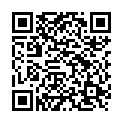|
|
|
| Module code: ABBG43 |
|
|
4V (4 hours per week) |
|
5 |
| Semester: 2 |
| Mandatory course: yes |
Language of instruction:
English/German |
Assessment:
Exam (minimum of 75% to pass) 90 minutes
[updated 01.10.2020]
|
Exam recurrence:
The information regarding exam recurrence is found within the exam policy of the study programme (ASPO).
|
ABBG43 (P410-0010) Aviation Business (Basic), Bachelor, ASPO 01.10.2015
, semester 2, mandatory course
ABBG43 (P410-0010) Aviation Business (Basic), Bachelor, ASPO 01.10.2018
, semester 3, mandatory course
|
60 class hours (= 45 clock hours) over a 15-week period.
The total student study time is 150 hours (equivalent to 5 ECTS credits).
There are therefore 105 hours available for class preparation and follow-up work and exam preparation.
|
Recommended prerequisites (modules):
None.
|
Recommended as prerequisite for:
ABBG411 ATPL Test Preparation
ABBG48 Performance and Flight Planning II & Navigation II
ABBG62 Visual Flight Training II
[updated 12.05.2016]
|
Module coordinator:
Studienleitung |
Lecturer:
Matthias Lehmann (lecture)
Rolf Weymar (lecture)
[updated 04.05.2016]
|
Learning outcomes:
Performance and Flight Planning (broader term) Part 1:
Performance and Flight Planning is subdivided into the subjects:
- Mass & balance
- Airplane performance
- Flight planning & monitoring
After successfully completing this course, students will have comprehensive knowledge about definitions mass and balance considerations and limitations while operating an airplane and are able to calculate aircraft loadings, CG positions for the safe operation of airplane certified according to CS 23. Students will know the flight mechanical and aerodynamical principles and concepts of airplane performance, know the legal requirements to operate airplanes according to performance class B and will be able to calculate the required parameters for all phases of flight for this type of airplanes.
They will be able to gather all information necessary to plan a commercial flight according to VFR. At the end of mass & balance, performance and flight planning considerations and calculation, the students will be able to make proper decisions about the operationality of a flight under given conditions and will be able to assess the risk contained therein.
Navigation (broader term) Part 1:
Navigation is subdivided into the subjects:
- General navigation
- Radio navigation
After successfully completing this part of the course, students will be able to navigate an airplane according to visual flight rules by the application of methods of determining position, course and distance to travel to a pre-determined destination. For that to happen, the students must have a high level of knowledge and practice of all navigation methods applicable to a VFR flight.
[updated 01.10.2020]
|
Module content:
Performance and Flight Planning Part 1
1. Mass and balance
1.1. Units and conversions
1.2. Aeroplane mass definitions
1.3. Allowed take off mass
1.4. Maximum traffic and fuel load
1.5. The effect of mass and its distribution
1.6. Aerodynamic chord and CG position
1.7. Adjusting the CG position
1.8. Mass & balance calculations
2. Aeroplane performance
2.1. Performance legislation
2.2. Lift, weight and drag
2.3. Climbing, descending, level flight
2.4. Thrust and power
2.5. Take off _ general principles
2.6. Angle of climb
2.7. Rate of climb
2.8. Calculation of climb parameters
2.9. The cruise _ range _ endurance
2.10. The descent
2.11. Approach and landing
2.12. Performance class B regulations
2.13. Calculation exercises
3. Flight planning and monitoring
3.1. Distance and speed
3.2. Fuel planning
3.3. Sources of information for flight planning
3.4. VFR fight planning
3.5. Calculation exercises
Navigation Part 1
1. General navigation
1.1. The solar system
1.2. The shape of the earth
1.3. Latitude and longitude
1.4. Departure
1.5. Great circle and rhumb lines
1.6. Convergency and conversion angle
1.7. Scale
1.8. Directions
1.9. Triangle of velocities
1.10. Calculation exercises
1.11. Aeronautical charts
1.12. Visual navigation
1.13. Fuel calculations
2. Radio navigation
2.1. Basic radio theory
2.2. VHF directional finding
2.3. Non-directional beacon
2.4. VHF omnidirectional range
2.5. Satellite navigation system
[updated 01.10.2020]
|
Teaching methods/Media:
Lectures, exercises, calculations/ppt and keynote presentations, white board, flip chart, iTunes U, iPad or MacBook,
[updated 01.10.2020]
|
Recommended or required reading:
- ATPL learning objectives, EASA 2016
- ATPL Aeroplane Performance, Slate Ltd. 2012
- ATPL Flight Planning, Slate Ltd. 2014
- ATPL Mass and Balance, Slate Ltd. 2014
- ATPL General Navigation, Slate Ltd. 2012
- ATPL Radio Navigation, Slate Ltd. 2012
- Certification and Specifications _Part 23_, EASA (latest version)
- Certifications and Specifications _Part Definitions_, EASA (latest version)
- Regulation(EU) 965 2012 Part CAT / AMC and GM to Part CAT
[updated 01.10.2020]
|


